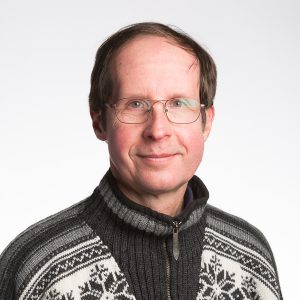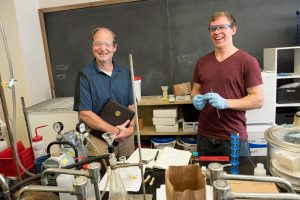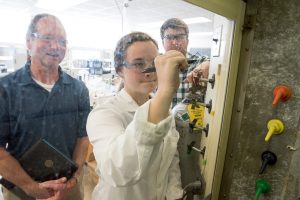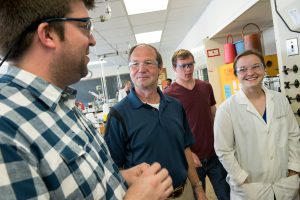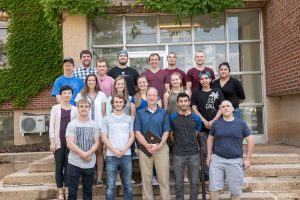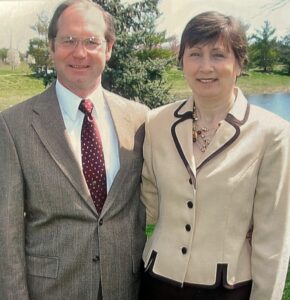 Terry ’73 and Janet Lindstrom have made an incredible commitment to establish the Terry ’73 and Janet Lindstrom Endowed Professor of Chemistry in support of the new School of Natural Sciences. Terry and Jan have remained dedicated to enriching students’ education and enabling them to discover their love for science and research. “Everyone deserves a passionate career,” Terry reflected in a past interview.
Terry ’73 and Janet Lindstrom have made an incredible commitment to establish the Terry ’73 and Janet Lindstrom Endowed Professor of Chemistry in support of the new School of Natural Sciences. Terry and Jan have remained dedicated to enriching students’ education and enabling them to discover their love for science and research. “Everyone deserves a passionate career,” Terry reflected in a past interview.
Terry found his deep appreciation for science while conducting research during his undergraduate years. He graduated from Augsburg in 1973 with degrees in biology and chemistry. After earning his Ph.D. in pharmacology and biochemistry from the University of Minnesota, he embarked on a decades-long career at Eli Lilly and Company, retiring from his position as Distinguished Lilly Research Fellow in 2010.
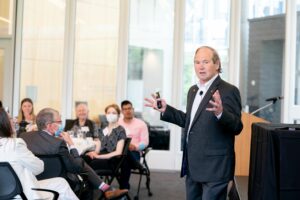 Terry serves as a member of Augsburg’s board of regents, where he chairs the enrollment management committee. He also stays engaged through volunteering at events such as the annual Agre Symposium, and meeting students when the opportunity arises. “My Augsburg experience was transformational as a result of the faculty and administration’s commitment to rigorous learning, understanding, and critical thinking. This commitment was further emphasized through intense experiential learning opportunities which made the academic work directly applicable to real-world issues. I knew my professors were genuinely invested in my success. These attributes continue at Augsburg University today and it is my honor and privilege to support this outstanding institution,” Terry said.
Terry serves as a member of Augsburg’s board of regents, where he chairs the enrollment management committee. He also stays engaged through volunteering at events such as the annual Agre Symposium, and meeting students when the opportunity arises. “My Augsburg experience was transformational as a result of the faculty and administration’s commitment to rigorous learning, understanding, and critical thinking. This commitment was further emphasized through intense experiential learning opportunities which made the academic work directly applicable to real-world issues. I knew my professors were genuinely invested in my success. These attributes continue at Augsburg University today and it is my honor and privilege to support this outstanding institution,” Terry said.
Along with this most recent gift, he and Jan established the Endowed Lindstrom Research Fund which supports students’ participation in summer research.
Endowed professorships like the Lindstrom Endowed Professor of Chemistry play a vital role in supporting faculty, promoting academic excellence, and ensuring the long-term success of students. “This transformative gift affirms Augsburg’s longstanding commitment to excellence in the natural sciences,” said President Paul Pribbenow. “In a time when scientific knowledge has itself become contested, we are incredibly grateful to the Lindstroms for this investment to strengthen the critical leadership of our faculty.”
“We are thrilled about the creation of this endowed professorship. This position, the first to be embedded within the School of Natural Sciences, will encourage interdisciplinary collaboration and prepare generations of future Auggies to be scientific leaders in their communities,” added Paula O’Loughlin, provost and senior vice president for academic and student affairs.
We extend our deepest gratitude to Terry and Jan for their unwavering dedication and investment in the future of our students.

